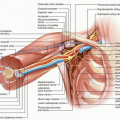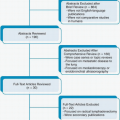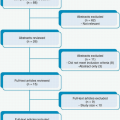Introduction
Lung cancer is the leading cause of cancer-related death in the United States. In 2013, about 226,000 new cases of lung cancer were diagnosed, and about 160,000 people died from the disease.1 Only 15.9% of lung cancer patients are alive 5 years after their diagnosis.2 Improvements in treatment approaches and a better understanding of early detection, prognostic markers, and targeted therapy have elicited much progress against the disease in the past 10 years. As we gain more knowledge to further refine diagnostic and treatment modalities, the care of lung cancer patients will only become more complex and nuanced.
About 85% of lung cancers are non-small cell lung cancer (NSCLC), and approximately 90% of NSCLCs are related to tobacco exposure. Despite recent advances in both screening and imaging, only approximately 30% of NSCLCs are diagnosed at an early stage, meaning that the majority of these cancers are diagnosed when they are no longer amenable to complete surgical resection. The paradigm of care for NSCLC patients lies in multidisciplinary evaluation, a process that integrates the expertise of specialists such as surgeons, medical oncologists, radiation oncologists, pulmonologists, radiologists, and pathologists to provide individualized therapy. Within this paradigm, surgical resection has long been the standard treatment for patients with resectable stage I to IIIA NSCLC. However, surgeons’ practices for providing such treatment vary greatly. Large database analysis have revealed differences in morbidity, mortality, and long-term patient outcome when lung resections are performed by specialty-trained thoracic surgeons over cardiothoracic surgeons or general surgeons.3 Setting standards to define systematic approaches to staging lung cancer and treating lung cancer patients is imperative to minimizing such wide variations in surgical practice. Doing so will improve the consistency and completeness of common thoracic oncologic surgeries and thereby improve patient outcomes.
Scope
Although surgery is often integrated with other modalities in lung cancer care, this section focuses on only the technical components and considerations governing the key operations that are important to ensuring that lung cancer patients receive highquality multidisciplinary care. These key operations include procedures that are the cornerstones of clinical staging (e.g., mediastinal staging) and surgical treatment (e.g., lung resection).
The section also provides a broad set of collective recommendations guiding the surgical care of lung cancer patients. These recommendations take into account the fact that patients’ care requirements depend on individual clinical scenarios and may vary to a high degree and that best practices are continuously evolving as new evidence accrues. Each key operation is discussed in terms of its oncologic principles, specific steps, and common but avoidable pitfalls, and both minimally invasive and open approaches to these operations are discussed. At the end of each chapter, a clinically relevant question regarding a topic of current debate and ongoing scientific research is explored.
In this section, we purposefully avoid duplicating clinical guidelines for lung cancer care, such as those established by the American College of Chest Physicians,4 by not
straying into the realm of clinical management algorithms. Although such guidelines can serve as a resource to guide the delivery of patient care, they do not explicitly address the technical aspects of the surgeries that impact outcomes. In fulfilment of this need, the following chapters describe the way in which insights taken from clinical science should be integrated into surgical approaches for lung cancer. In addition, because lung cancer surgery has many “craft” issues, stylistic tips to improve the ease or efficiency with which surgeons can perform a particular maneuver or step of an operation are also provided. Whenever possible, we describe the way in which the recommendations were derived and the level of evidence on which these recommendations were based. In this way, we distinguish sound consensus opinions regarding the minimum expected elements of a procedure from suggestions aimed at optimizing the outcomes of the procedure.
straying into the realm of clinical management algorithms. Although such guidelines can serve as a resource to guide the delivery of patient care, they do not explicitly address the technical aspects of the surgeries that impact outcomes. In fulfilment of this need, the following chapters describe the way in which insights taken from clinical science should be integrated into surgical approaches for lung cancer. In addition, because lung cancer surgery has many “craft” issues, stylistic tips to improve the ease or efficiency with which surgeons can perform a particular maneuver or step of an operation are also provided. Whenever possible, we describe the way in which the recommendations were derived and the level of evidence on which these recommendations were based. In this way, we distinguish sound consensus opinions regarding the minimum expected elements of a procedure from suggestions aimed at optimizing the outcomes of the procedure.
Purpose
The purpose of this section is to describe a minimal standard for the actions that should be taken in the surgical care of lung cancer patients, with the ultimate goal of improving the quality of care these patients receive. In this way, the aim of the following chapters is to “raise the floor” rather than define the absolute ceiling of what can be achieved; further improvement is always possible. This standard should serve as a guide for surgeons who are focused on delivering high-quality care to achieve the best outcomes for their patients. Underpinning this section is the belief that the vast majority of surgeons are committed to this goal and that the lack of a definition of what constitutes good quality care is a major impediment to achieving it.
The recommendations given in the following chapters are as data-driven and evidence-based as possible. However, many of the issues discussed in this section generally have not been addressed directly in previous studies. Thus, some recommendations must be extrapolated from indirect data. In addition, the consensus opinion of the selected experts tasked with writing the following chapters permeated the production of this section, which included identifying key questions, defining gaps in knowledge or performance, judging the applicability of indirect data, and debating the validity of opinions in the absence of data. The result of this process reflects not only the authors’ efforts to provide recommendations that are as grounded in data as possible but also their use of whatever means necessary to establish a minimal standard for the surgical care of patients with lung cancer.
Quality of Care
Quality care has been defined as “the degree to which health services … increase the likelihood of desired health outcomes and are consistent with current professional knowledge.”5 This section focuses on those aspects of lung cancer surgery that, if performed with consistent accuracy and care, likely contribute to better outcomes. However, defining and implementing quality metrics, which generally requires validation that such measures are clearly linked to better outcomes and can be applied in a variety of settings, is beyond the scope of this chapter. In addition, implementing quality metrics is inherently linked to measurement; this chapter focuses only on what should be done and does not address the ways in which one might measure this.
Multidisciplinary Care
Although it is not a matter of surgical care, strictly speaking, working in a multidisciplinary fashion is so integral to modern cancer care that it merits emphasizing. Great surgical care done on an island will always have more limited impact. The knowledge required to effectively treat lung cancer patients is expanding rapidly and is far beyond what any one person can grasp. The care of lung cancer patients has come to involve many different treatment modalities, and providing optimal surgical care requires nuanced input from experts in multiple disciplines, including radiology and pathology.
The key to providing effective multidisciplinary care is the establishment of a regular forum in which experts from various fields discuss individual cases and collectively make treatment decisions. Simply obtaining input from another specialist when one believes it necessary is not enough. The forum enables surgeons to obtain other experts’ input about knowledge gaps they otherwise would not have identified, let alone addressed. Optimal care is best ensured with multidisciplinary input.
Many European countries mandate that cancer cases be discussed in multidisciplinary forums. Similarly, the American College of Chest Physicians, after systematically reviewing the available literature, has recommended that patients with stage I to III lung cancer be evaluated by a multidisciplinary team.6,7 However, quantifying the impact of this approach on patient outcomes has proven difficult, as outcomes are the result of multiple factors. Furthermore, recent studies have shown that the quality of multidisciplinary tumor board discussions can vary significantly.8,9,10,11 A discussion of the implementation of a multidisciplinary tumor board is beyond the scope of this section; however, the setting in which surgical care is delivered (i.e., as part of a multidisciplinary team approach) and the quality of the team members’ interactions are likely important factors contributing to lung cancer patients’ quality of care and outcomes.
Stay updated, free articles. Join our Telegram channel

Full access? Get Clinical Tree








